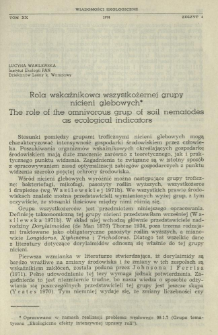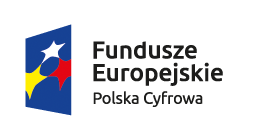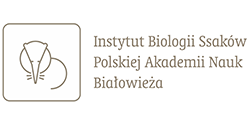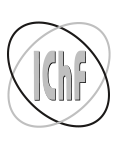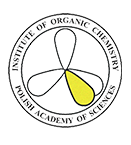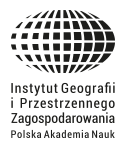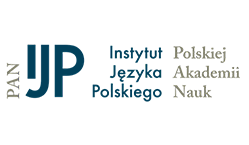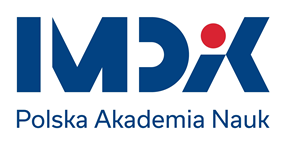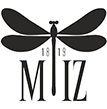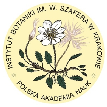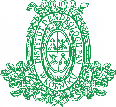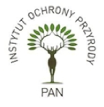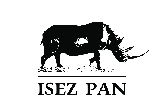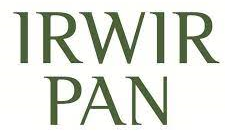- Wyszukaj w całym Repozytorium
- Piśmiennictwo i mapy
- Archeologia
- Baza Młynów
- Nauki przyrodnicze
Wyszukiwanie zaawansowane
Wyszukiwanie zaawansowane
Wyszukiwanie zaawansowane
Wyszukiwanie zaawansowane
Wyszukiwanie zaawansowane

Obiekt
Tytuł: Rola wskaźnikowa wszystkożernej grupy nicieni glebowych
Inny tytuł:
The role of the omnivorous grup of soil nematodes as ecological indicators ; Rola wskaźnikowa nicieni glebowych
Współtwórca:
Polska Akademia Nauk. Komitet Ekologiczny
Wydawca:
Miejsce wydania:
Opis:
Strony 385-390 ; 24 cm ; Bibliografia na stronie 389 ; Streszczenie w języku angielskim
Typ obiektu:
Abstrakt:
The following trophic groups can be distinguished among soil nematodes:bacteriophages, mycophages, parasites of higher plants, omnivores and predators.Representatives of all the above groups can be found in all habitats, although thequantitative relations between them differ. The group of omnivores proved to besusceptible to cultivation operations. The author includes in this group representativesof the superfamily Dorylaimoidea (De Man 1876) Thorne 1934, with theexception of the genera Longidorus, Xiphinema and Trichodorus. The numbers ofdorylaimids were greatest in grassland, lower in forests and lowest in cultivatedfields. The author’s own studies show that natural habitats contain greater numbersof this group than is the case with cultivated fields (Tab. I), and also that thehighest percentage in relation to the whole nematode community is formed by theomnivorous group in meadows and pastures, fewer in a forest habitat and by farthe least in cultivated fields (Fig. 1). It may be concluded from comparison of theannual metabolism of this trophic group in several habitats that its significanc e issmall in cultivated fields and far greater in a more natural habitat (Fig. 2). Theauthor also found that the numbers of the omnivorous group were inversel y correlatedwith intensity of fertilization by sheep manure (Fig. 3). It can be assumed that the cause of the reduction in the group of omnivores in cultivated fields incontrary to natural habitats, lies in the cultivatio n operations carried out there.
Bibliografia:
Ebert, M. 1966 —Vergleichende Faunistik und Okologie der Dorylaimiden derUmgebung Erlangens (Nematoda, Dorylaimida) — Z. Morph. Okol. Tiere, 58:109—143.
Johnson, S.R., Ferris,J.M. 1971 — Nematode community structure of selecteddeciduous woodlots — J. Nematol. 3: 315—316.
Norton, D.C., Frederick, L.R., Ponchillia, P.E. and Nyhan, J.W.1971 —Correlation of nematodes and soil properties in soybean fields — J. Nematol. 3:154—163.
Sandner, H., Wasilewska, L. 1970 — The role of the habit at in formingcommunities of soil nematodes — Proc. IX int. nem. Symp. (Warsaw, 1967), 92:391—408.
Wasilewska, L. 1967 — Analysis of the occurrence of nematodes in alfalfa crops.II. Abundance and quantitative relations between species and ecologica lgroupsof species — Ekol. Pol. A, 15: 347—371.
Wasilewska, L. 1971a — Nematodes of the dunes in the Kampions Forest. II. Community structure based on numbers of individuals, state of biomass andrespiratory metabolism — Ekol. Pol. 19 : 651—688.
Wasilewska, L. 1971b — Klasyfikacja troficzna nicieni glebowych i roślinnych —Wiad, Ekol. 17: 379—388.
Wasilewska, L. 1971c — Nicienie młodnika sosnowego w Nadleśnictwie Laski,Puszcza Kampinoska — Zeszyty probl. Post .Nauk roln. 121: 159—167.
Wasilewska, L.1974a — Number, biomass and metabolic activity of nematodesof two cultivated fields in Turew — Zesz. probl. Pest. Nauk roln. 154: 419—442.
Wasilewska, L. 1974b —Analysis of the sheep pasture ecosystem in Pieniny Mountains (Carpathians). XIII. Quantitative distribution and respiratory metabolism of nematodes on mountain pasture — Ekol. Pol. 22.
Wasilewska, L. 1974c — Evaluation of quantitative distribution of soil nematodes of a pasture in the vicinity of Sofia — Zesz. probl. Post. Nauk roln. 154: 213—225.
Wasilewska, L. (inpress) — Number, biomass and metabolism of nematodes of moist temperate coniferous forest in Vancouver B.C. Canada.
Wasilewska, L., Papirnska, E. (inpress) — Energy transfer through the soil nematode group on the rye field at Rogaczewo near Turew — Pol. ecol. Stud. 1.
Yeates, G. W. 1970 —The diversity of soil nematode faunas — Pedobiologia, 10: 104—107.
Czasopismo/Seria/cykl:
Tom:
Zeszyt:
Strona pocz.:
Strona końc.:
Szczegółowy typ zasobu:
Identyfikator zasobu:
oai:rcin.org.pl:147249 ; ISSN 0013-2969
Źródło:
MiIZ PAN, sygn. P.3259 ; kliknij tutaj, żeby przejść
Język:
Język streszczenia:
Prawa:
Licencja Creative Commons Uznanie autorstwa 3.0 Polska
Zasady wykorzystania:
Zasób chroniony prawem autorskim. [CC BY 3.0 PL] Korzystanie dozwolone zgodnie z licencją Creative Commons Uznanie autorstwa 3.0 Polska, której pełne postanowienia dostępne są pod adresem: ; -
Digitalizacja:
Muzeum i Instytut Zoologii Polskiej Akademii Nauk
Lokalizacja oryginału:
Biblioteka Muzeum i Instytutu Zoologii PAN
Dofinansowane ze środków:
Dostęp:
Kolekcje, do których przypisany jest obiekt:
- Repozytorium Cyfrowe Instytutów Naukowych > Kolekcje Partnerów > Muzeum i Instytut Zoologii PAN > Czasopisma
- Repozytorium Cyfrowe Instytutów Naukowych > Piśmiennictwo > Czasopisma/Artykuły
Data ostatniej modyfikacji:
4 lut 2022
Data dodania obiektu:
16 lis 2020
Liczba pobrań / odtworzeń:
42
Wszystkie dostępne wersje tego obiektu:
https://rcin.org.pl./publication/105737
Wyświetl opis w formacie RDF:
Wyświetl opis w formacie RDFa:
Wyświetl opis w formacie OAI-PMH:
| Nazwa wydania | Data |
|---|---|
| Z. 4. Rola wskaźnikowa wszystkożernej grupy nicieni glebowych / Wasilewska L. | 4 lut 2022 |
Obiekty Podobne
Navarro, P. Lluch, J.
Brzeski, Michał W.
Wasilewska, Lucyna
Wasilewska, Lucyna
Wasilewska, Lucyna
Susulovsky, Andrij Winiszewska-Ślipińska, Grażyna

 INSTYTUT ARCHEOLOGII I ETNOLOGII POLSKIEJ AKADEMII NAUK
INSTYTUT ARCHEOLOGII I ETNOLOGII POLSKIEJ AKADEMII NAUK
 INSTYTUT BADAŃ LITERACKICH POLSKIEJ AKADEMII NAUK
INSTYTUT BADAŃ LITERACKICH POLSKIEJ AKADEMII NAUK
 INSTYTUT BADAWCZY LEŚNICTWA
INSTYTUT BADAWCZY LEŚNICTWA
 INSTYTUT BIOLOGII DOŚWIADCZALNEJ IM. MARCELEGO NENCKIEGO POLSKIEJ AKADEMII NAUK
INSTYTUT BIOLOGII DOŚWIADCZALNEJ IM. MARCELEGO NENCKIEGO POLSKIEJ AKADEMII NAUK
 INSTYTUT BIOLOGII SSAKÓW POLSKIEJ AKADEMII NAUK
INSTYTUT BIOLOGII SSAKÓW POLSKIEJ AKADEMII NAUK
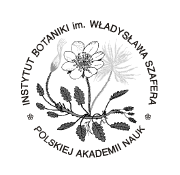 INSTYTUT CHEMII FIZYCZNEJ PAN
INSTYTUT CHEMII FIZYCZNEJ PAN
 INSTYTUT CHEMII ORGANICZNEJ PAN
INSTYTUT CHEMII ORGANICZNEJ PAN
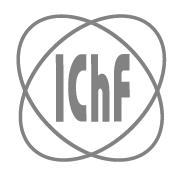 INSTYTUT FILOZOFII I SOCJOLOGII PAN
INSTYTUT FILOZOFII I SOCJOLOGII PAN
 INSTYTUT GEOGRAFII I PRZESTRZENNEGO ZAGOSPODAROWANIA PAN
INSTYTUT GEOGRAFII I PRZESTRZENNEGO ZAGOSPODAROWANIA PAN
 INSTYTUT HISTORII im. TADEUSZA MANTEUFFLA POLSKIEJ AKADEMII NAUK
INSTYTUT HISTORII im. TADEUSZA MANTEUFFLA POLSKIEJ AKADEMII NAUK
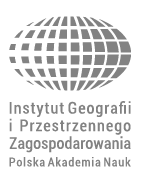 INSTYTUT JĘZYKA POLSKIEGO POLSKIEJ AKADEMII NAUK
INSTYTUT JĘZYKA POLSKIEGO POLSKIEJ AKADEMII NAUK
 INSTYTUT MATEMATYCZNY PAN
INSTYTUT MATEMATYCZNY PAN
 INSTYTUT MEDYCYNY DOŚWIADCZALNEJ I KLINICZNEJ IM.MIROSŁAWA MOSSAKOWSKIEGO POLSKIEJ AKADEMII NAUK
INSTYTUT MEDYCYNY DOŚWIADCZALNEJ I KLINICZNEJ IM.MIROSŁAWA MOSSAKOWSKIEGO POLSKIEJ AKADEMII NAUK
 INSTYTUT PODSTAWOWYCH PROBLEMÓW TECHNIKI PAN
INSTYTUT PODSTAWOWYCH PROBLEMÓW TECHNIKI PAN
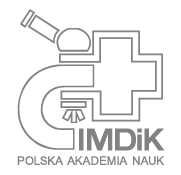 INSTYTUT SLAWISTYKI PAN
INSTYTUT SLAWISTYKI PAN
 SIEĆ BADAWCZA ŁUKASIEWICZ - INSTYTUT TECHNOLOGII MATERIAŁÓW ELEKTRONICZNYCH
SIEĆ BADAWCZA ŁUKASIEWICZ - INSTYTUT TECHNOLOGII MATERIAŁÓW ELEKTRONICZNYCH
 MUZEUM I INSTYTUT ZOOLOGII POLSKIEJ AKADEMII NAUK
MUZEUM I INSTYTUT ZOOLOGII POLSKIEJ AKADEMII NAUK
 INSTYTUT BADAŃ SYSTEMOWYCH PAN
INSTYTUT BADAŃ SYSTEMOWYCH PAN
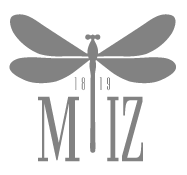 INSTYTUT BOTANIKI IM. WŁADYSŁAWA SZAFERA POLSKIEJ AKADEMII NAUK
INSTYTUT BOTANIKI IM. WŁADYSŁAWA SZAFERA POLSKIEJ AKADEMII NAUK
